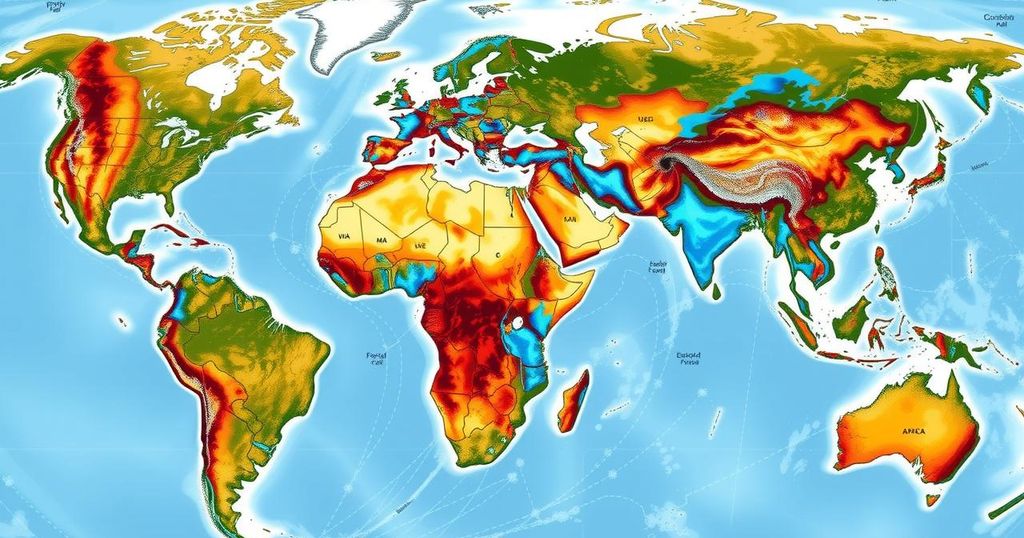Global Weather Hazards Summary: July 3 to July 9, 2025
- ENSO-neutral conditions have been observed globally this week.
- Abnormal dryness is affecting central Africa and eastern Central Asia.
- Several regions in Africa face persistent dry and flooding conditions.
- Western and eastern Gulf of Guinea are experiencing ongoing dry weather.
- Heavy rainfall in Kinshasa leads to significant flooding concerns.
- Southwestern South Africa faces potential flooding due to forecasted rainfall.
Understanding Weather Hazards in Africa
Global weather patterns are always in flux, but from July 3 to July 9, 2025, the most significant observation was the ENSO-neutral conditions. These conditions have led to abnormal dryness in regions like central Africa, eastern Central Asia, and even parts of northern Hispaniola. While some areas continue to remain parched, there are others that are grappling with the opposite issue: flooding. Such contrasting weather phenomena highlight the complexities of the climate dynamics affecting our planet today.
Flooding and Dryness in Various Regions
In Africa, persistent dry conditions have been particularly challenging for regions in the western and eastern parts of the Gulf of Guinea. Nigeria is experiencing dryness, particularly in the east; the situation is similar for the western and northern parts of Cameroon and southern Chad. Meanwhile, the Sudd wetlands in northern South Sudan are inundated, leading to serious concerns about waterlogged agricultural land. Flooding is a pressing issue in southwest Nigeria, where heavy rainfall has been relentless. Kinshasa in the Democratic Republic of the Congo has also been hit hard, as torrential rains have overwhelmed the infrastructure, prompting urgent calls for assistance.
High Flood Risk in Some Regions
Furthermore, the Omo Gibe River has overflowed in southwestern Ethiopia, affecting districts around Lake Turkana. As for West Africa, Flora Sierra Leone, and Liberia, along with eastern Guinea-Conakry and southern Mali, face dry conditions, making agriculture difficult. Meanwhile, places like northern Mauritania and northern Mali are gearing up for a hot week ahead. In southwestern South Africa, however, there looms a high risk of flooding due to moderate rainfall that has been observed and is forecasted for the coming week, which may complicate the already delicate situation across the region. The risk factors from both flooding and drought showcase how unpredictable and perilous the climate can be in these areas.
In summary, the weather hazards observed from July 3 to July 9, 2025, reflect a world grappling with diverse climate challenges. While some regions in Africa are battling abnormal dryness and drought, others are facing flooding and severe weather conditions. This fluctuating weather highlights the increasing unpredictability of climate patterns globally, having profound implications for agriculture, infrastructure, and human livelihoods.




Post Comment